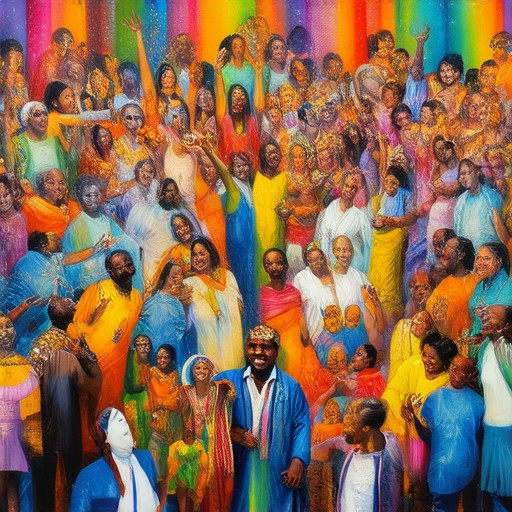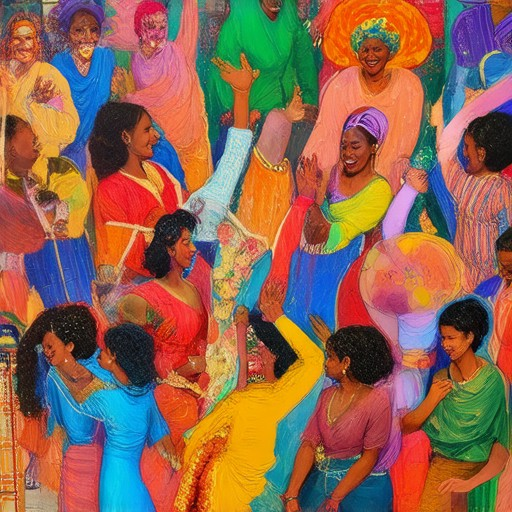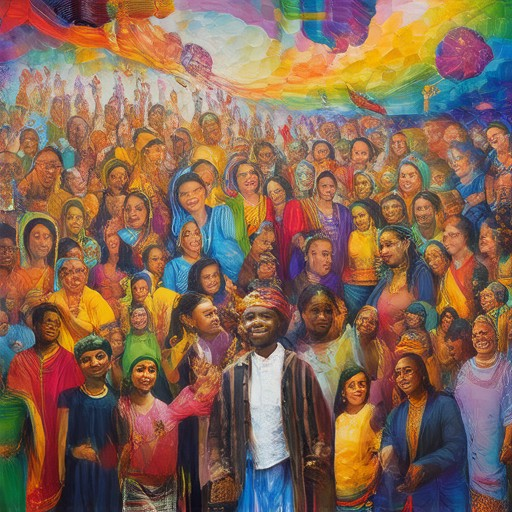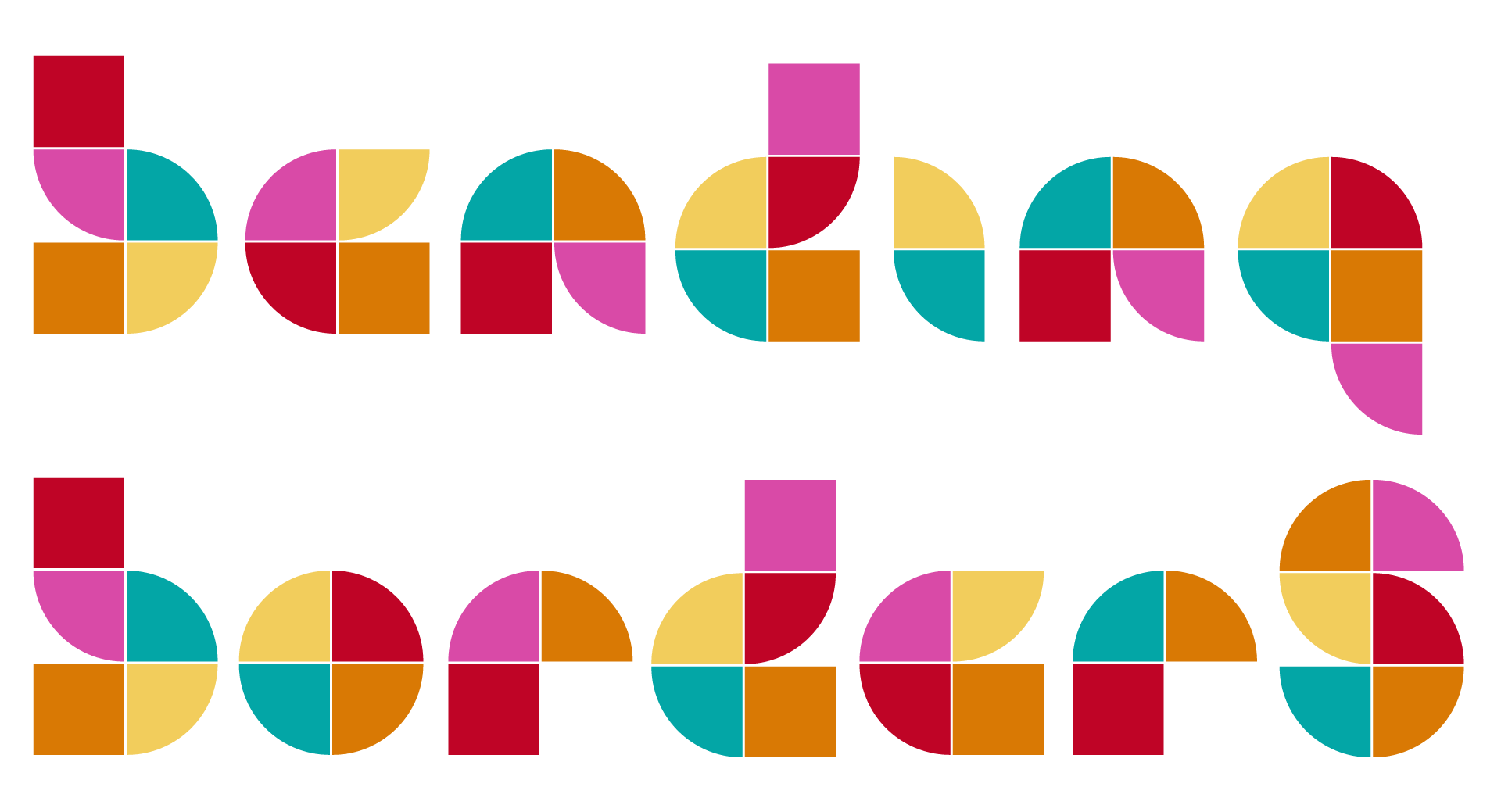Exploring Adventures in Cultural Diversity: Answers to Key Questions and Activities
Embarking on the journey of cultural discovery is not just an academic endeavor—it’s a transformative experience that shapes our understanding of the world around us. Cultural diversity, often referred to as the essence of human civilization, offers a rich tapestry of traditions, beliefs, and practices that have shaped societies across time and space. From ancient civilizations to modern globalized communities, the quest to understand and appreciate diverse cultures has never been more pertinent.
This article delves into the multifaceted nature of cultural diversity, providing answers to pressing questions and offering practical activities to engage learners. We’ll explore examples of cultural activities, delve into the four Cs of cultural diversity, examine famous quotes that resonate with the importance of multiculturalism, and provide actionable strategies for educators and students alike. Whether you’re seeking to enrich your curriculum or simply gain deeper insight into the subject, this guide offers a comprehensive exploration of cultural diversity.
Key Takeaways
– Cultural Diversity is Rich and Varied: From the vibrant celebrations like Brazil’s Carnival to global cuisines like sushi, cultural diversity showcases unique expressions and adaptations across borders.
– Engaging with Diverse Cultures: Immerse yourself in media, connect with global networks, and participate in cultural exchanges to gain firsthand insights into diverse traditions and lifestyles.
– Four Pillars of Cultural Diversity: Understand the types—internal, external, organizational, and worldview—to build a comprehensive framework for cross-cultural interactions and inclusivity.
– Fostering Inclusivity: By embracing cultural diversity, organizations and societies can drive innovation, create harmonious environments, and promote mutual respect among differing groups.

Examples of Cultural Activities
Cultural activities encompass a wide range of experiences that reflect the traditions, beliefs, and practices of different societies. Here are some examples:
- Traditional Festivals: Events like Diwali, Chinese New Year, and Mardi Gras are celebrated with parades, music, and customs that showcase cultural heritage.
- Performing Arts: Theater, music, and dance performances often highlight cultural narratives and traditions, bringing communities together.
- Culinary Events: Food festivals, cooking competitions, and wine tastings offer opportunities to explore cultural dishes and beverages.
- Historical Reenactments: These events bring history to life, allowing audiences to learn about significant historical moments and cultural milestones.
- Community Celebrations: Holidays, local fairs, and neighborhood gatherings foster a sense of belonging and cultural identity.
- Visual Arts: Exhibits, paintings, and sculptures display cultural themes, inspiring reflection and appreciation for diverse artistic expressions.
- Workshops and Classes: Whether in art, history, or crafting, these sessions provide hands-on learning experiences rooted in cultural traditions.
- Seasonal Festivals: Events like Christmas, Halloween, and harvest festivals celebrate nature and traditions tied to specific times of the year.
- Cultural Exchanges: Programs that facilitate interaction between different cultures, such as exchange students or collaborative projects, promote cross-cultural understanding.
Cultural activities play a vital role in preserving heritage, fostering creativity, and building bridges between diverse groups. They are essential for enriching our lives and promoting mutual respect and appreciation for different ways of life.
For more inspiration, explore platforms like Bending Borders , which offers unique cultural experiences and stories from around the globe.
The Four Cs of Cultural Diversity
The concept of cultural diversity is often broken down into the “Four Cs” to guide individuals in understanding and appreciating different cultures. These Cs are:
- Curiosity
- Cultivate an interest in exploring and learning about different cultures.
- Approach cultural differences with an open mind and eagerness to understand.
- Use curiosity to gain insights into traditions, beliefs, and customs.
-
Comfort
- Develop the ability to adapt to various cultural settings.
- Be open-minded and respectful in diverse environments.
- Practice cultural comfort through exposure and engagement.
-
Clarity
- Understand the cultural context and communication styles.
- Recognize and respect cultural norms and values.
- Enhance clarity by studying cultural differences and their implications.
-
Confidence
- Feel assured in interacting with people from diverse backgrounds.
- Engage confidently in cross-cultural conversations and activities.
- Build confidence through continuous learning and practice.
By mastering these four Cs, individuals can enhance their cultural competence and humility, fostering meaningful connections and bridging cultural divides.

Famous Quotes About Cultural Diversity
“Cultural diversity is not just a concept; it’s a way of life that enriches our global community.”
– Malala Yousafzai
“Diversity is the beauty of our world, and embracing it makes us stronger together.”
– Unknown
“At the heart of progress lies the celebration of differences, not the erasure of them.”
– Arun Gandhi
“When we respect each other’s backgrounds, we gain the wisdom of many worlds.”
– Deepak Chopra
“Cultural diversity is our greatest strength, and it’s in celebrating this strength that we find our path to unity.”
– Nelson Mandela
“The world is a book, and those who do not love to read will remain illiterate.”
– Nelson Mandela
“We are all connected through our shared human experience, and it’s this connection that makes cultural diversity a treasure we all inherit.”
– Unknown
Beyond these quotes, exploring platforms like Bending Borders offers deeper insights into global cultures and their unique contributions to humanity.

Cultural Diversity Examples
- The Carnival in Rio de Janeiro is a celebration of Brazilian culture, showcasing its vibrant traditions, music, and dance.
- Sushi, a dish originating from Japan, has become a popular global cuisine, demonstrating how cultural practices can adapt and spread across borders.
- The Maori language in New Zealand is a living example of linguistic diversity, playing a central role in preserving the indigenous culture and identity.
Exploring Cultural Diversity
To explore cultural diversity, consider the following structured approach:
- Immerse Yourself in Media: Watch films, listen to music, or read books from different cultures. Platforms like Bending Borders offer insights into global experiences.
- Engage with Communities: Attend cultural festivals, participate in workshops, or join online forums dedicated to diverse cultures. Websites like National Geographic provide educational resources.
- Visit Cultural Institutions: Explore museums, art galleries, and historical sites that highlight different cultures. Learn about traditions, customs, and artifacts through guided tours.
- Connect with Global Networks: Join social media groups or forums focused on cultural exchange. Platforms like Lonely Planet connect travelers and culture enthusiasts worldwide.
- Participate in Exchanges: Organize or join cultural exchange programs where you can live with individuals from different backgrounds. This provides firsthand exposure to diverse lifestyles.
- Learn Language and Traditions: Take classes or converse with native speakers to understand languages and customs better. Resources from Duolingo can help start learning new languages.
By following these steps, you can gain a deeper appreciation for the richness of cultural diversity and foster cross-cultural understanding.

What Are the 4 Types of Cultural Diversity?
Cultural diversity encompasses a wide array of differences among individuals, groups, and societies. Understanding these differences is essential for fostering inclusive environments and promoting mutual respect. Below are the four primary types of cultural diversity:
- Internal Diversity
- Internal diversity refers to the variations within an individual’s own identity. These differences can include:
- Personality traits
- Beliefs and values
- Lifestyle choices
- Biological and genetic makeup
- This type of diversity is often unique to each person and can influence how they interact with others.
-
External Diversity
- External diversity involves differences between groups based on factors like:
- Nationality
- Language
- Religion
- Ethnic background
- Socioeconomic status
- External diversity is what we typically recognize as cultural differences and can significantly impact communication and interactions between individuals from various backgrounds.
-
Organizational Diversity
- Organizational diversity refers to the variety of cultures, beliefs, and practices present within a company or organization. This includes:
- Different work styles
- Cultural norms
- Management approaches
- Employee demographics
- Organizations benefit from organizational diversity by gaining access to a broader range of ideas and perspectives.
-
Worldview Diversity
- Worldview diversity pertains to the differing ways people perceive reality and the world around them. Key components include:
- Moral frameworks
- Philosophical beliefs
- Social norms
- Economic systems
- This type of diversity shapes how individuals approach problems, make decisions, and interact with their environment.
Bending Borders explores the complexities of cultural diversity through in-depth storytelling and travel guides, offering insights into global traditions and perspectives.
By understanding and embracing these four types of cultural diversity, we can create more inclusive and harmonious societies. Cultural diversity not only enriches our lives but also drives innovation and progress in various fields.




0 Comments